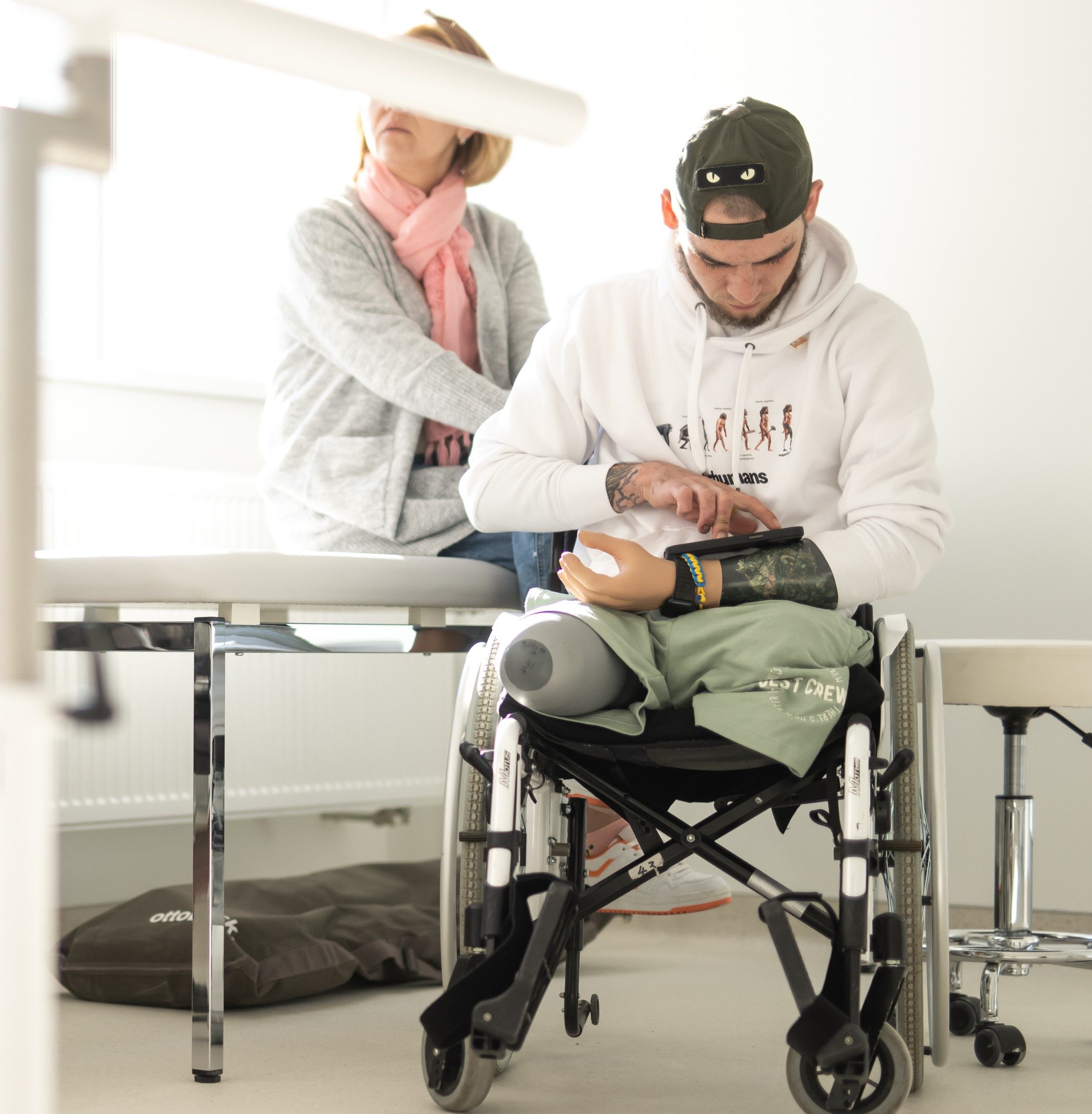Dedicated surgical hubs, Community Diagnostic Centres, outpatient clinics in retail units and virtual wards are just some examples of how the NHS is innovating to beat record waiting lists.
Experts Tim Mitchell, Pradip Karanjit, Philippa Slinger and Isabel Lawicka discuss how it’s going in our September edition of FORTIS magazine – the magazine from Health Spaces.
WORDS: Jo Waters
NHS innovation takes on the waiting lists
Speaking at the launch of the surgical hubs last year, Health and Social Care Secretary Steve Barclay was determined to take on the waiting list of 7.3 million (now estimated to be over 7.5 million): “In order to bust the Covid-19 backlogs and keep pace with future demands, it can’t simply be business as usual. Surgical hubs are a tangible example of how we are already innovating and expanding capacity to fill surgical gaps across the country, to boost the numbers of operations and reduce waiting times,” he added.
Surgical hub advocate and President of the Royal College of Surgeons, Tim Mitchell, explains: NHS “We’ve had difficulty with surgery for many years, particularly during the winter months when there is extreme pressure from emergency care, which clearly must be dealt with. The consequences of that have been that theatre time for elective surgery is taken up by emergencies.”
PROFESSIONAL TEAMS ARE SETTING NEW STANDARDS
Surgical hubs are being accredited by Getting It Right First Time (GIRFT), a national NHS England initiative, and guidelines for accreditation have been drawn up in consultation with the Royal College of Surgeons. Professor Tim Briggs, Chair of GIRFT and NHS England’s National Director for Clinical Improvement and Elective Recovery and part of the team who undertook the site accreditation visits, says he was impressed by the professionalism and enthusiasm of the hub teams.
“All of the sites we accredited are focused on providing an excellent patient experience and several are setting new standards for day case surgery and innovative models of care. We want to provide the assurance for patients and staff that these sites are delivering safe and high-quality care and will continue to accelerate their progress and productivity in the future.”
“On the whole, surgical teams have been very positive about setting up hubs, as the thing they like to do is operate. It’s devastating for the patients if their surgery is cancelled on the day, as happens from time to time, but it’s also frustrating for staff who are ready and prepared to do the treatment,” said Tim in March 2023.1
CANNOCK CHASE HOSPITAL – AN ACCREDITED SURGICAL HUB
Cannock Chase Hospital has been awarded national accreditation by GIRFT enabling the site to become an accredited surgical hub for elective surgery. Surgical hubs like this, which are separated from emergency services, are part of plans nationally to increase capacity for elective care with more dedicated operating theatres and beds. Cannock exclusively performs planned surgery and mainly focuses on high volume, low complexity (HVLC) surgery across ophthalmology and orthopaedics.
Professor David Loughton CBE, Group Chief Executive of the Royal Wolverhampton NHS Trust and partners Walsall Healthcare NHS Trust, said: “I’m delighted to have secured this national accreditation for our excellent facility at Cannock. With no emergency provision or A&E department, efforts have been focused on elective surgery both during and after Covid-19 at Cannock. This accreditation will only enhance the tremendous work being delivered there by a fantastic group of staff and enable our patients to continue to see the benefits of this.”
As part of a broader plan to serve the local population in both Staffordshire and the Black Country and to utilise the infrastructure of the site, a new Community Diagnostic Centre (CDC) is also being developed to replace the existing temporary diagnostic centre. The overall system strategy for Cannock Chase Hospital is to enable the separation of acute and elective diagnostics within the system and to align this with the government’s Rapid Diagnostic Centre strategy.
While the CDC will make use of existing infrastructure at the hospital, the new diagnostic centre will provide an opportunity to redesign clinical pathways, substantially increasing capacity to enable diagnostic service provision to meet the needs of local populations. By providing a new and modern working environment, the facilities will significantly assist staff productivity and welfare, too.
Glen Whitehouse, radiographer and Group Manager for Diagnostics, said: “Having a CDC on the site will be absolutely ideal for the elective surgery hub, because to have something like that you really need access to CT and MRI scanners on the site as well, so we have designed it to support that type of work alongside the traditional community diagnostic work.
“Our new Community Diagnostic Centre is going to offer CT and MRI state-of-the-art facilities for our patients; we are hoping to carry out about 35,000 diagnostic tests per year in that building.”
FOCUS ON CROYDON
Croydon University Hospital announced the expansion of its surgical hub last year to create another two operating theatres. Both have gone through GIRFT accreditation. Croydon’s sibling, the Purley Way Memorial Hospital, is expanding its elective centre. This will concentrate on low complexity cases such as hand surgery, varicose veins and gynaecological procedures, leaving the main hospital free to concentrate on more complex cases.4
Purley Elective Centre is one of 50 new surgical hubs to care for more people needing vital operations and help bust the Covid-19 backlogs. The hub also features new surgical theatres, short-stay wards and diagnostic services. At the time, Stella Vig, Consultant Surgeon and Clinical Director for Covid-19 Recovery at Croydon Health Services NHS Trust, said: “We know we can do more and the expansion of the Croydon and Purley elective centres will help us deliver extra procedures and know that more people are getting the care they need, while busting the backlogs and putting the pandemic behind us.”
THE GROWTH OF SURGICAL HUBS
• The Barking and Havering Surgical Hub announced a £14 million expansion at King George Hospital, including new operating theatres and double the number of recovery beds.2
• North West Anglia NHS Foundation Trust is in the process of getting its Hinchingbrooke Hospital site accredited as a surgical hub so they can focus on it as a centre for HVLC cases. The hospital’s theatre block is currently being rebuilt to support elective recovery.
• Another surgical hub will open in Cambridgeshire in 2025. “We’re also exploring redevelopment of our Stamford site to take more HVLC cases,” says Pradip Karanjit, Deputy Chief Operating Officer at North West Anglia NHS Foundation Trust.
• Cheshire and Merseyside Surgical Centre at Clatterbridge is a £10.6 million development of two modular theatres for less complex elective surgery and will treat an extra 6,000 patients a year.3 These were largely prebuilt before coming on site and had clinical engagement from concept to delivery. A successful recruitment campaign resulted in more than 40 staff being signed up.
MORE INNOVATIONS TO TACKLE THE WAITING TIMES
It’s not just surgical hubs that have been set up to tackle long waits. There’s a raft of new innovations popping up all around the country.
Community Diagnostic Centres
The Elective Recovery Plan also puts emphasis on delivering scans, tests and checks through CDCs in accessible sites, such as shopping centres and football stadiums. A target of opening 160 of these to perform up to nine million additional tests a year by 2025 was set. In Dorset, diagnostics and outpatient services are now being delivered in repurposed town centre retail outlets in a ‘Health on the High Street’ initiative providing easy access to services and reducing traffic to main hospital sites, as well as helping to clear long waits. The results are impressive.
Barking Community Hospital was selected to host a new CDC back in 2021. In its first two years of operation, the centre improved access and reduced waiting times for vital cancer tests and cardiovascular conditions and helped to tackle health inequalities.5
Virtual wards
West Hertfordshire Teaching Hospitals NHS Trust was among the first in the country to use virtual wards to help patients continue treatment at home. Virtual wards began during Covid-19 and were focused on supporting people with lung conditions, respiratory problems and heart failure, as well as supporting people recovering from Covid-19- related hospitalisation.
More recently, Leicestershire Partnership NHS Trust and Northamptonshire Healthcare NHS Foundation Trust have expanded their virtual wards and begun working collaboratively with other organisations and providers, including the NHS, local authorities and housing and community organisations. This has reduced length of stay for pneumonia in Leicestershire from 12 to seven days and high levels of patient satisfaction have been recorded.6
“THE AMOUNT OF PEOPLE WAITING 18 MONTHS WAS CUT BY 91%”
NEXT STEPS
Pradip says we need to move away from the culture of saying we need more evidence and pilot schemes when they have already proven to be successful elsewhere. “When we have evidence that something is working, we should move quicker,” he says. “From the GIRFT perspective, I think we need to focus on basic housekeeping. Do we start on time? Has the first patient been identified so we can proceed with surgery regardless of bed pressure?
“There are good learnings from GIRFT, which allow us to benchmark where we are in terms of regional and specialty level. When you look at productivity, some Trusts are good at cataracts and do eight a day and others are celebrating doing four – clearly, it’s not good enough.”
CLINICAL ENGAGEMENT: FACILITATE DON’T DICTATE
Pradip said if you compare the healthcare model from 30 or 40 years ago to how it is now, we are holding clinicians to account rather than using them as an asset.
“We should challenge poor performance based on data and evidence, but recognise that we are looking at a clinically-proven model. In the healthcare sector, it is clinicians who have the expertise. Our job is to facilitate not dictate. If we can get into that space though, it’s a partnership.”
He said it was crucial the whole multi-disciplinary team (MDT) was on board and clinical engagement in any improvements is key.
“Consultants can lead MDTs, but the whole MDT needs to understand the problem and buy into the solutions. This includes ward nurses, too. You can have all the robotic gadgets in the world, but if we can’t recover the patients safely, we can’t go ahead with surgery.”
GREENSHOOTS
Cheshire and Merseyside Surgical Centre at Clatterbridge is another example. Operating as a cold site, new theatres are located away from the main busy acute hospital at Arrowe Park to provide enhanced infection prevention and control.
Isabel Lawicka, Head of Policy and Analysis at NHS Providers, stresses that despite the backdrop of industrial action, unmet need and winter pressures, some impressive progress has been made towards achieving the targets set in February 2022.
“The first milestone target of virtually eliminating two-year waits was met, and although eliminating 18-month waits was not met in time this April, the amount of people waiting that long was cut by 91% – a remarkable achievement. “But there is also a hidden backlog in community and mental health waiting lists. We currently have 13,000 adults and 13,000 children waiting over a year for community services [at the time of writing].
“Addressing staff morale, gaps in staffing and getting the right level of capital funding is key for recovery to go at the pace it needs to.”
Philippa Slinger, who was Chief Executive of Acute, Mental Health and Community Trusts for 30 years, agrees: “Nobody is shrugging their shoulders – this is a mammoth task and it’s not static. It’s not a backlog that’s going to reduce every time you do an operation, because it’s about flow – the number of patients that are being referred onto the list versus the number who you can manage to operate on.”
Tim Mitchell says staff are working incredibly hard to increase capacity from where we were pre-Covid. “It’s very easy to forget the impact of waiting on patients. They are waiting in limbo; they don’t know what is going to happen and in many cases their condition may be getting worse the longer
they wait.”
Philippa says the crucial question is whether we can ever get ahead of demand. “The list is always going to fill up as people get older. The big question is: can we ever get ahead of the curve and give ourselves a buffer?”
LOOKING FORWARD
A big challenge for everyone working in the NHS has been staff shortages. “Shortages are particularly bad among theatre nurse staff and anaesthetists,” says Tim Mitchell. He said it’s important that there’s an expansion in the total number of staff and that staff aren’t just moved around: “We need a long-term workforce plan to have a sustainable workforce. Without that, we can’t staff additional facilities.”
The long-awaited Workforce Plan was announced in June 2023, a few days ahead of the NHS’s 75th anniversary on 5th July 2023, and Rishi Sunak proudly announced that the 15-year plan will make the health service “fit for the future”, telling the BBC it would be his legacy. In August 2023, the newly appointed Elective Recovery Taskforce announced steps to help tackle the waiting lists, including increasing the number of scans, tests and checks by 742,000 annually, achieving this by making eight of 13 new CDCs the responsibility of the independent sector. The taskforce has a long-term plan that aims to give patients more choice and works to improve how the independent sector and the NHS work together.
FOOTNOTES
1 bit.ly/3qoanUD
2 bit.ly/45fVbI4
3 bit.ly/47ib0zw
4 bit.ly/3YBLaTv
5 bit.ly/45c8dpV
6 bit.ly/3Ym0h36
© Dialogue Content Marketing Ltd 2023.
This article was taken from the September 2023 edition of FORTIS magazine.
FORTIS magazine is a Health Spaces Limited publication. Opinions expressed in FORTIS magazine are not necessarily those of Health Spaces Limited or Dialogue Content Marketing Ltd. Material contained in this publication may not be reproduced, in whole or in part, without prior permission of the publishers. No responsibility can be taken on behalf of advertisements printed in the magazine.
FORTIS magazine – read more
This article was written for the September 23 edition of FORTIS magazine; a forum for the NHS to share ideas, innovations and case studies.
FORTIS is a forum for the NHS to share ideas, innovations and case studies. To read the publication in full and access digital copies, visit FORTIS magazine. FORTIS magazine is free for NHS change-makers and leaders and is available as a print or digital copy. FORTIS magazine is managed and owned by Health Spaces Ltd.
Please note: Health Spaces is pleased to showcase projects we have worked on and also to be able to share projects and developments which we have not been involved with. The only project in this article delivered by Health Spaces is the CDC discussed by Cannock Chase Hospital.




